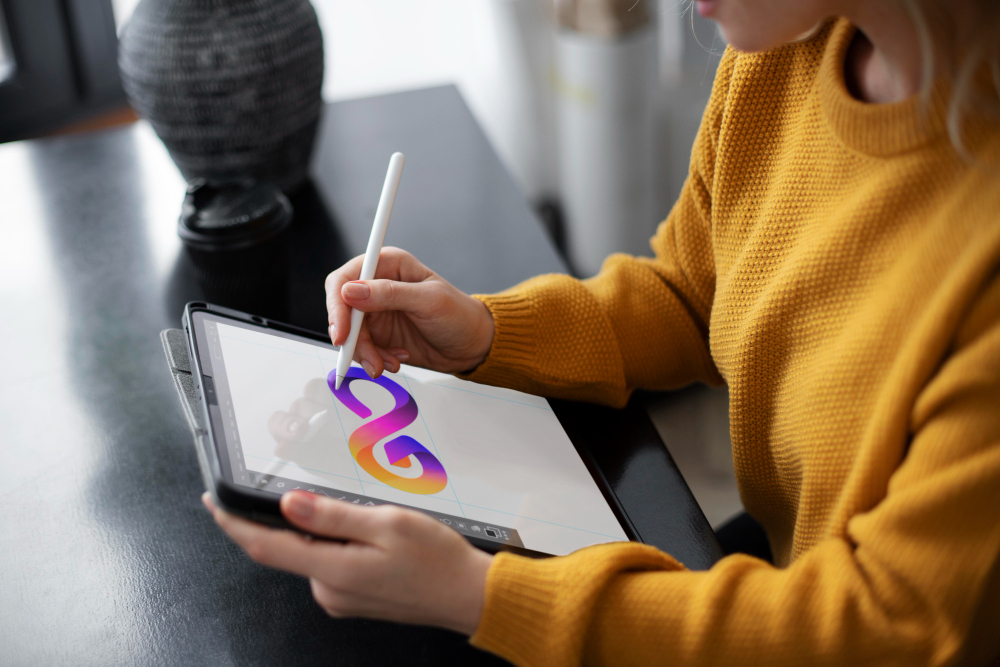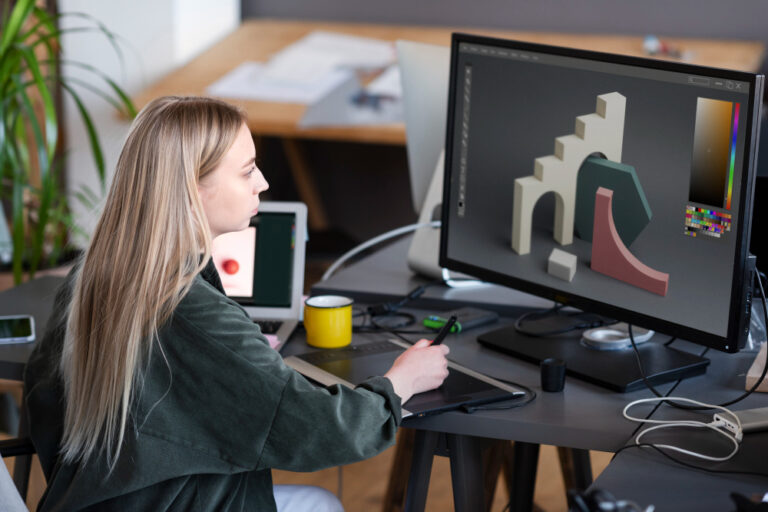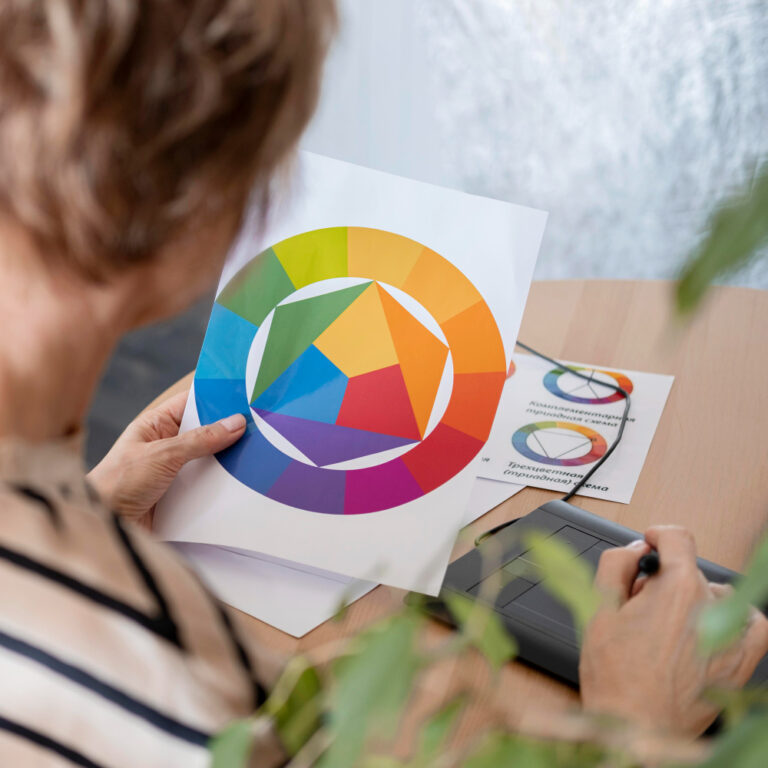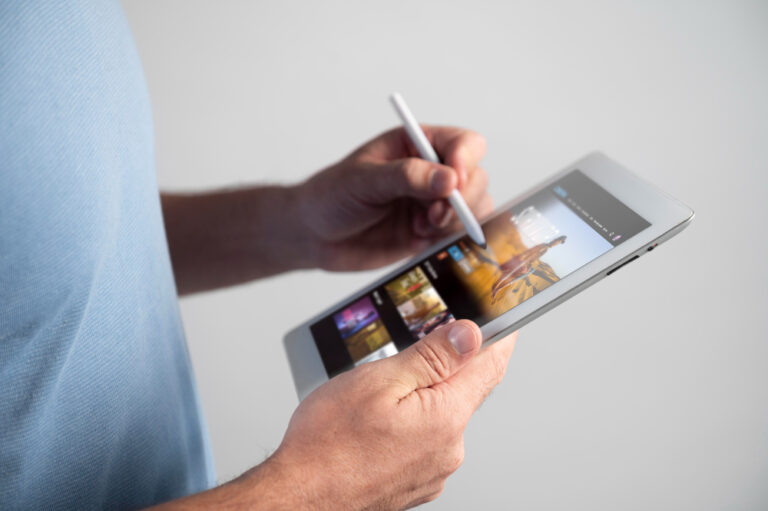How to Design a Logo [Step-by-Step Guide]
Designing a logo is an intricate process that involves more than just combining colors and shapes. It’s about crafting a visual representation that encapsulates your brand’s identity and communicates its essence to the world. Whether you’re a business owner, a graphic designer, or simply someone passionate about design, this comprehensive step-by-step guide will lead you through the art of logo design, ensuring that your final creation not only stands out but also distinctly reflects your brand’s character.
Step 1: Define Your Brand
In this initial step, where you set the foundation for your logo design, consider your brand’s identity from the ground up. Start with the core values that define your brand. What does your brand stand for? Is it about innovation, sustainability, quality, or something else entirely? Understanding your brand’s mission and values is crucial, as your logo will be the visual embodiment of these principles.
Exploring branding lettering and a logos at this stage can provide valuable insights. Consider how these elements can reflect your brand’s character. For example, if your brand focuses on environmental sustainability, a logo can be designed to resemble leaves or eco-friendly symbols. When you’re designing branding lettering, choose fonts that convey your brand’s tone – whether it’s modern, elegant, playful, or professional.
Step 2: Research and Inspiration
Research and inspiration are the cornerstone of successful logo design. It’s your opportunity to gather a wealth of ideas and concepts that will inform your design. In addition to researching your industry and competitors, consider exploring design trends in cool logos. Keep an eye out for innovative and contemporary logo designs that resonate with your brand’s identity.
For those in the clothing industry, logo ideas can be sparked by analyzing famous fashion brands. Examine how renowned clothing brands use their logos to communicate style, quality, and uniqueness. Your logo should reflect your brand’s identity, and this is the phase where you gather the raw materials for your creative process.
Step 3: Sketch Your Ideas
The sketching phase is where your ideas come to life on paper. This is the part of the process where you let your creativity flow freely, and you shouldn’t worry about perfection just yet. Sketch out rough concepts, experimenting with different shapes and symbols. Consider the mood you want your logo to convey.
When brainstorming logo ideas for a clothing brand, think about the elements that are iconic in the fashion industry, such as clothing hangers, buttons, or apparel items like dresses, shirts, or shoes. These sketches can form the basis for your logo design, serving as a visual brainstorm.
Step 4: Choose the Right Style
Logos can be categorized into different styles, each with its unique characteristics. For example, a simple logo style focuses on minimalism and clean design. On the other hand, cool logos often embrace modern, edgy, and innovative styles. Depending on your brand, select the style that best aligns with its values and essence.
In the case of a clothing brand logo, you may find that a simple logo approach works well. This style emphasizes clean lines, minimalistic shapes, and a focus on the brand name or initial. Simplicity in your logo design can convey a sense of elegance, modernity, and timelessness.
Step 5: Typography Matters
Typography is a pivotal element in logo design, especially when your logo includes text. The choice of font and typography should align with your brand’s values and style. For clothing brand logos, typography plays an essential role in conveying style and branding lettering.
Experiment with various fonts to discover one that perfectly captures your brand’s essence. For instance, if your clothing brand is all about vintage styles, you might choose retro-style fonts. For contemporary brands, modern and sleek typography may be more appropriate.
Step 6: Color Selection
Colors are not just for aesthetics; they’re powerful tools for conveying emotions and messages. Carefully select a color palette that resonates with your brand’s identity and values. Simplicity is often the key to success in cool logos.
When designing a clothing brand logo, consider the psychology of color. Think about how your chosen colors communicate the mood and style of your clothing line. For instance, calm and muted colors can convey sophistication, while vibrant and bold colors can suggest a sense of fun and youthfulness. Refer color theory blog for more in-depth information.
Step 7: Balance and Proportion
Achieving balance and proportion is an essential aspect of logo design. Ensure that all the elements within your logo are harmoniously arranged. You don’t want a cluttered or imbalanced design that confuses or overwhelms viewers.
When designing a logo for a clothing brand, balance and proportion are key to creating a visually appealing and memorable logo. Each element within the logo should be carefully proportioned to create a harmonious whole. A well-proportioned logo is more likely to leave a lasting impression on your audience.
Step 8: Test on Various Backgrounds
Your logo will be used across various platforms and materials, from websites to promotional materials. Therefore, it’s important to test how it appears on different backgrounds. Ensure that your logo remains impactful and retains its visual integrity regardless of the context in which it is presented.
In the clothing industry, where branding is often displayed on various mediums like clothing tags, online stores, and physical retail outlets, testing your logo on various backgrounds is vital. You want to ensure that your logo looks impressive whether it’s on a dark fabric label or a light website background.
Step 9: Feedback and Revisions
Seeking feedback from others is an integral part of the design process. Sharing your design with friends, colleagues, or online design communities provides an external perspective that can help you refine and enhance your logo. Constructive criticism allows you to identify areas for improvement and gain fresh insights.
When brainstorming logo ideas for a clothing brand, external input can be invaluable. Your brand’s identity is something that should be carefully refined to meet your audience’s expectations. Be open to feedback and willing to make revisions to elevate your logo.
Step 10: Finalize Your Design
After considering feedback and making necessary revisions, it’s time to finalize your logo. Ensure that it’s versatile, scalable, and suitable for different sizes and applications. A well-designed logo should look just as impressive on a business card as it does on a billboard.
Creating a logo that scales effectively is paramount. It ensures that your brand remains consistent and recognizable across a wide range of applications, from business cards to billboards and everything in between.
Step 11: Protect Your Logo
Consider trademarking your logo to legally protect it. Consult with a legal expert if needed to ensure that your brand’s visual identity is safeguarded. This step is essential for securing your logo’s uniqueness and preventing any unauthorized use or replication. It’s a measure to legally protect your logo’s visual identity and maintain exclusivity.
Step 12: Implement and Showcase
Once you have your final logo, it’s time to implement it across all your branding materials. This includes your website, business cards, social media profiles,
clothing tags, and any other relevant platforms. Showcase your new logo proudly, as it represents your brand’s identity and values.
The implementation of your logo is where it truly comes to life. Consistency in branding across all platforms and materials is key to creating a strong and memorable brand image. Your logo is not just a symbol; it’s the visual representation of your brand’s character and values.
Wrap Up
Designing a logo is a creative journey that demands a profound understanding of your brand, comprehensive research, and meticulous attention to detail. By following this comprehensive step-by-step guide, you can create a logo that not only looks visually appealing but also effectively communicates your brand’s narrative and identity to the world. Whether you’re launching a new business or revamping an existing brand, a thoughtfully designed logo is an invaluable asset.
Remember, the finest logos are those that seamlessly merge cool logo ideas with simplicity, balance, and the unique personality of your brand. By adhering to these steps and paying attention to these details, you’ll be well on your way to crafting a logo that leaves a lasting mark in the world of branding and design.







